If nature ever decided to showcase its artistic side, the mandrill would be its masterpiece. With a face painted in electric blues and reds and a personality as bold as its colors, the mandrill (Mandrillus sphinx) is one of Africa’s most remarkable primates. But beyond the vibrant hues and striking looks lies a fascinating story of intelligence, hierarchy, and raw power.
This article explores where mandrills live, how they interact, what they eat, how they express aggression, and why conservation efforts are vital for their survival.
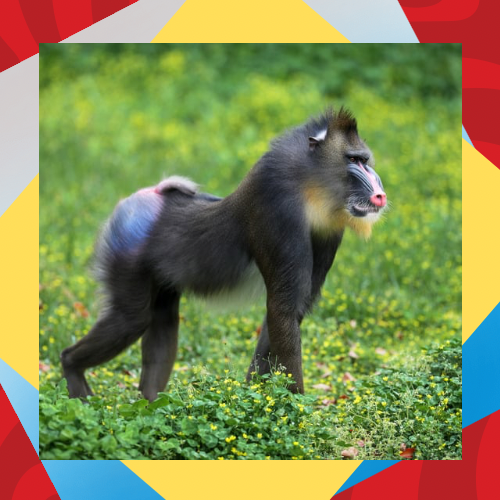
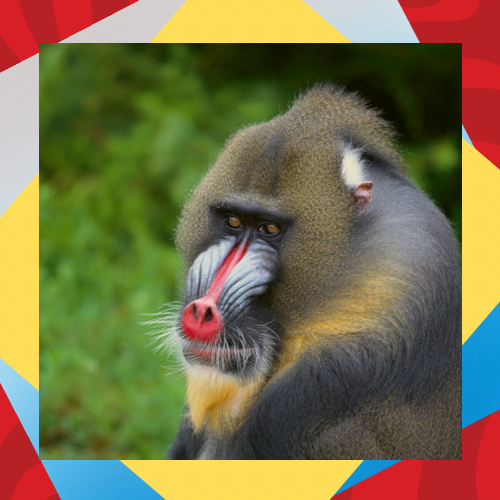
Where Mandrills Live
Mandrills inhabit the dense rainforests and savanna borders of Gabon, southern Cameroon, Equatorial Guinea, and parts of the Republic of the Congo. They prefer areas with thick vegetation, where they can find shelter and food on the forest floor while also climbing trees for safety or fruit.
Unlike many primates that spend much of their time in the canopy, mandrills are primarily terrestrial, moving in large groups through the undergrowth. These groups can be so big that they seem to ripple across the forest floor like a living wave of color and sound.
Size and Appearance
Males are much larger and more vividly colored than females — a classic case of sexual dimorphism.
- Males can weigh up to 36 kg (80 lbs) and have long canine teeth that can reach 6 cm (2.5 in).
- Females, on the other hand, are smaller and have duller coloration.
The most iconic feature of the mandrill is its face: ridged blue skin on both sides of the nose, a scarlet muzzle, and a yellow beard. The rump is equally bright, with red, purple, blue, and pink hues. These colors become even more intense when a mandrill is excited or aroused.
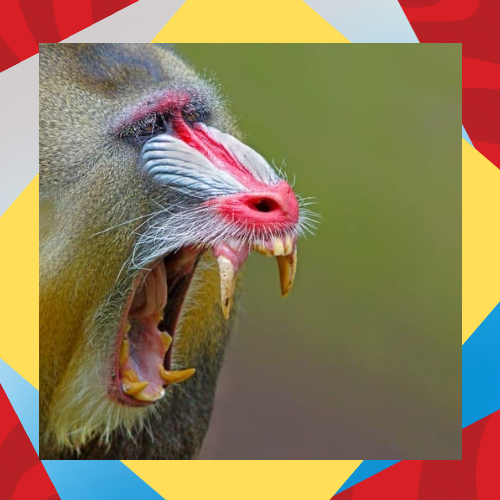
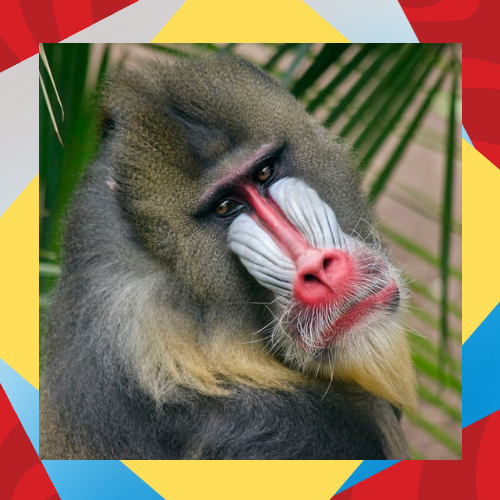
The Science Behind Their Colors
Those dazzling shades aren’t just for show — they’re social signals. The red comes from blood vessels close to the skin, while the blue is produced by microscopic collagen fibers that scatter light.
A male’s color intensity reflects his health, dominance, and hormone levels. Dominant males have the brightest faces and rumps, signaling strength and fitness to rivals and potential mates. Submissive or lower-ranking males tend to be duller, almost like they’re “turning down the volume” on their colors to avoid confrontation.
A Highly Social Species
Mandrills live in complex social systems. Small family units often join together into massive groups called hordes, sometimes numbering hundreds of individuals — the largest gatherings known among non-human primates.
Females form the stable core of these communities, maintaining long-term bonds through grooming, vocalizations, and shared childcare. Males, however, are more transient. They often live alone or in bachelor groups and join the hordes temporarily during the mating season.
Social rank is everything. Dominant males not only get first access to food but also enjoy the most mating opportunities. Their authority is reinforced through visual displays, deep vocal calls, and even body posture.
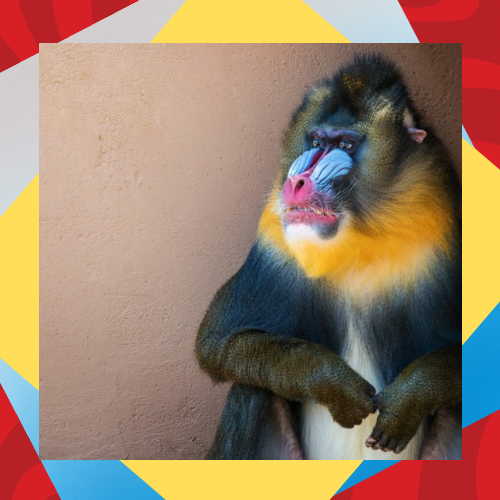
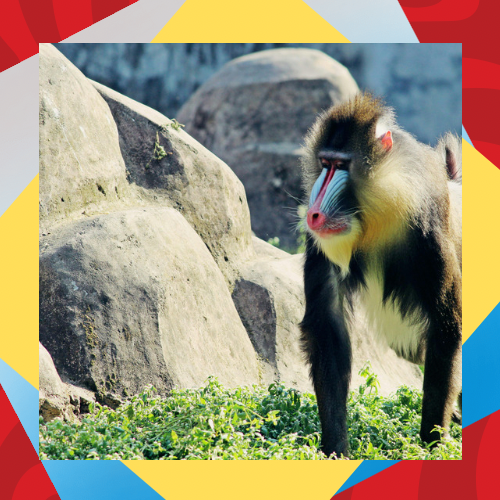
Diet: Nature’s Omnivores
Mandrills are omnivorous opportunists. They eat what’s available — and that’s quite a range:
• Fruits (especially figs)
• Seeds, leaves, and roots
• Insects, snails, and worms
• Occasionally small reptiles or mammals
They use their powerful hands to dig, crack open shells, or pluck insects from logs. By consuming and dispersing seeds, mandrills play an important ecological role in maintaining forest biodiversity.
Aggressive Behavior: Displays, Dominance, and Defense
Despite their colorful, almost playful appearance, mandrills can be highly aggressive, especially males. Aggression plays a critical role in their social structure — helping to maintain order, establish hierarchy, and protect territory.
1. Dominance Displays
When two males confront each other, the initial stage is usually a show of strength rather than outright violence. They bare their massive canine teeth, shake branches, or slap the ground. Their faces and rumps can flush brighter as blood flow increases — a visual warning to rivals. Loud grunts and sharp screams often accompany these standoffs.
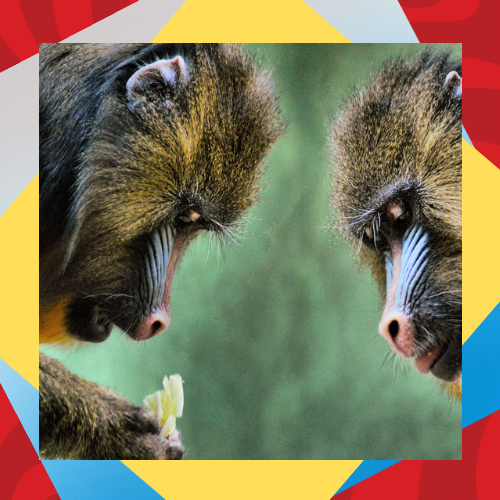
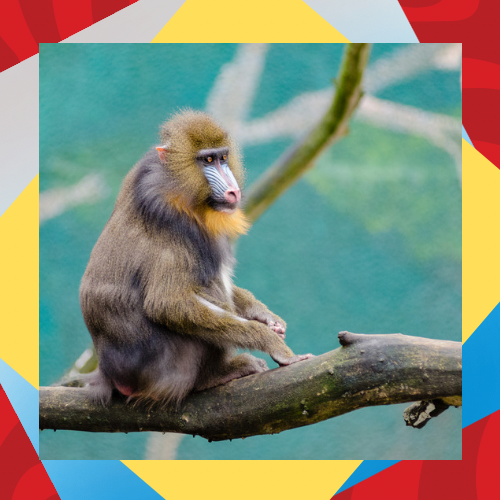
2. Physical Aggression
If neither male backs down, the confrontation can turn violent. Fights involve lunges, bites, and slashing with those formidable canines. Serious injuries are not uncommon, especially during the breeding season when competition for females peaks.
3. Protection and Defense
Aggression isn’t limited to males. Females can also act fiercely defensive when protecting their infants. In the wild, a mother mandrill will confront snakes, small predators, or even other females who get too close to her young.
4. Hierarchy Enforcement
Dominant males use aggressive posturing to maintain their status. Subordinate males often avoid eye contact, move aside, or adopt submissive body language to prevent conflict. Within hordes, this aggressive discipline helps keep order among hundreds of individuals.
Interestingly, mandrills use ritualized aggression — meaning many confrontations end with visual or vocal displays rather than fights. This system allows them to assert dominance while minimizing the risk of serious injury.
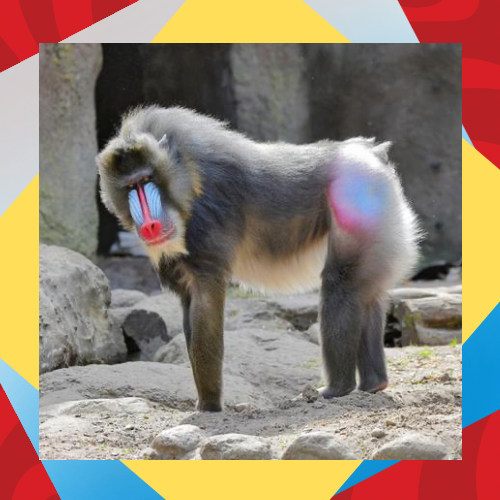
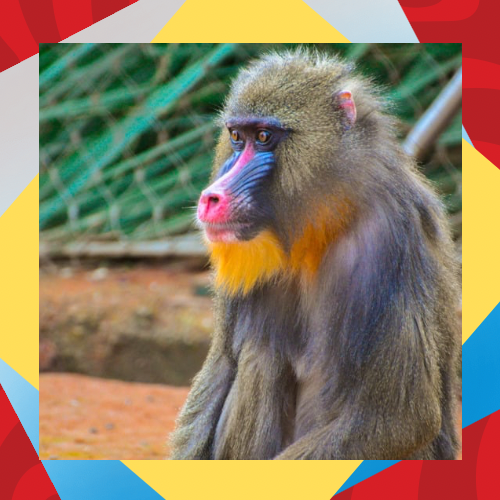
Reproduction and Parenting
The mating season usually coincides with the rainy months when food is abundant. Dominant males gain most of the breeding opportunities, though sneaky lower-ranking males sometimes mate covertly.
Females give birth after about six months of gestation, usually to a single infant. Newborns cling tightly to their mothers, riding on their bellies at first, then on their backs as they grow. Females share strong bonds and often groom each other’s infants, creating a cooperative nursery-like environment.
Young males eventually leave their natal groups as they reach maturity, while females stay with their mothers for life.
Behavior and Communication
Mandrills are expressive animals. They use facial expressions, body language, and a wide range of vocalizations — from low grunts to loud barks. The “silent bared-teeth face,” where a mandrill shows its teeth without sound, is actually a friendly or submissive gesture, not a threat.
They also rely heavily on scent marking. Glands in their chest region release unique odors that signal identity and reproductive status. Males with stronger scents tend to be more dominant.
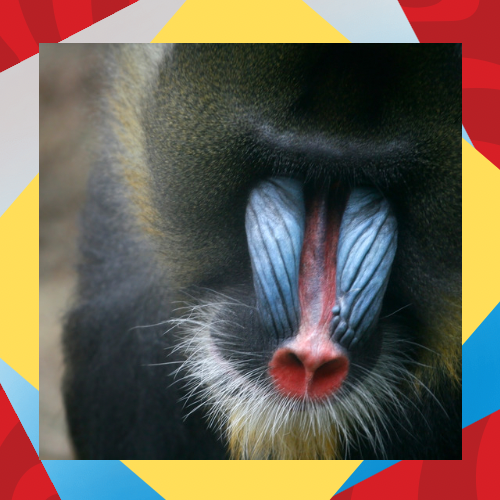
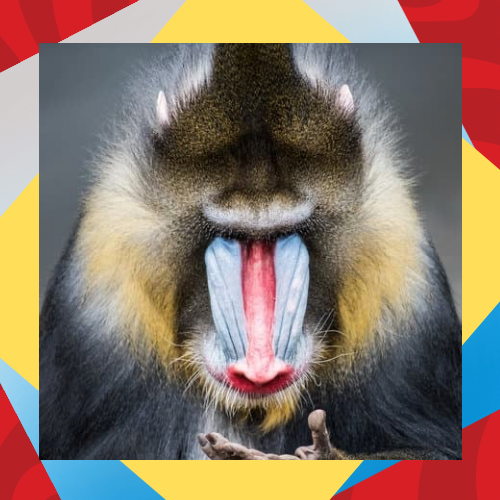
Fun Facts About Mandrills
- Charles Darwin described the mandrill as “the most extraordinarily colored mammal in the world.”
- A male mandrill’s canine teeth can be longer than a lion’s.
- They are related to baboons, but genetic studies show they belong to a separate genus.
- Mandrills sometimes store food in cheek pouches — a built-in “snack bag.”
- They use specific calls to communicate group movements, much like “check-ins” during travel.
Conservation Status and Threats
The IUCN Red List classifies mandrills as Vulnerable. Populations are declining due to two main threats:
- Habitat loss: Logging, agriculture, and road construction are fragmenting their forest homes.
- Hunting: Mandrills are frequently targeted for bushmeat, especially in regions where wildlife laws are weakly enforced.
Because they live in low densities and require large, continuous habitats, mandrills are highly sensitive to human disturbance. Protecting large forest corridors in Gabon and Congo is critical for their long-term survival.
Several national parks, including Lopé National Park in Gabon, serve as key refuges. Conservationists are focusing on anti-poaching patrols, community education, and sustainable ecotourism to protect these primates.
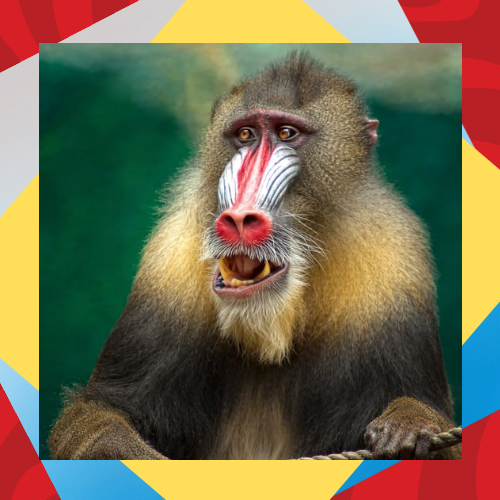
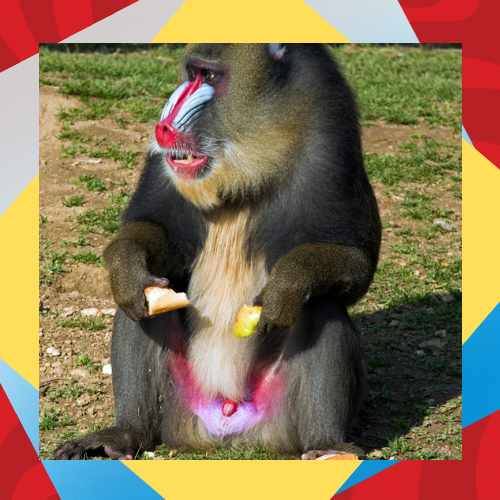
Why Mandrills Matter
Mandrills are more than a colorful curiosity — they’re vital parts of rainforest ecosystems. By dispersing seeds, turning over soil, and influencing vegetation patterns, they help shape the forest’s structure.
They also act as flagship species: by protecting mandrills, conservationists safeguard entire habitats and the countless other species that depend on them.
Observing Mandrills in the Wild
The best way to see mandrills responsibly is through guided ecotourism in Gabon, especially in Lopé National Park, where researchers have studied them for decades. Ethical guidelines — keeping distance, avoiding feeding, and minimizing noise — help ensure that human presence does not harm wild populations.

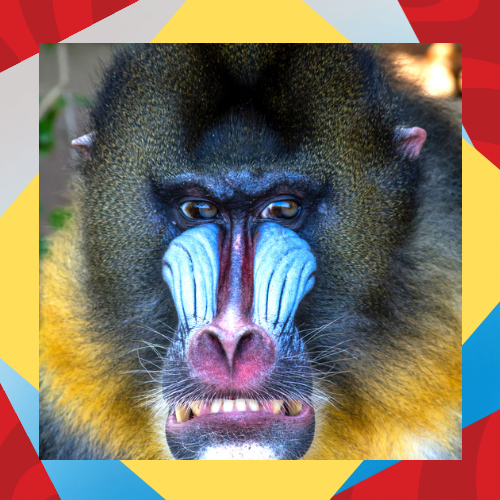
Final Thoughts
Mandrills are living proof that nature values both beauty and strength. Beneath the bright colors lies a complex society marked by deep social bonds, intelligence, and moments of fierce aggression. They remind us that even the most dazzling creatures are shaped by competition, cooperation, and survival.
Protecting them means preserving one of the most dynamic — and colorful — stories in the animal kingdom.
References
- Abernethy, K. A., et al. “Mandrillus sphinx.” IUCN Red List of Threatened Species. https://www.researchgate.net/publication/338557380_Mandrillus_sphinx
- Setchell, J. M., & Dixson, A. F. (2001). “Circannual changes in the secondary sexual adornments of male mandrills.” Behavioral Ecology and Sociobiology. https://pubmed.ncbi.nlm.nih.gov/11253846/
- Renoult, J. P., et al. (2011). “The evolution of the multicoloured face of mandrills.” Proceedings of the Royal Society B. https://www.scientificlib.com/en/Biology/Animalia/Chordata/Mammalia/MandrillusSphinx01.html
- Wickings, E. J., & Dixson, A. F. (1992). “Development from birth to sexual maturity in a semi-free-ranging colony of mandrills.” International Journal of Primatology. https://rep.bioscientifica.com/view/journals/rep/95/1/jrf_95_1_015.xml
- Primate Conservation, NE. “Mandrill Facts and Conservation.” https://neprimateconservancy.org/mandrill/
- Denver Zoo & Los Angeles Zoo Animal Pages — Mandrill Species Information. https://denverzoo.org/animals/mandrill
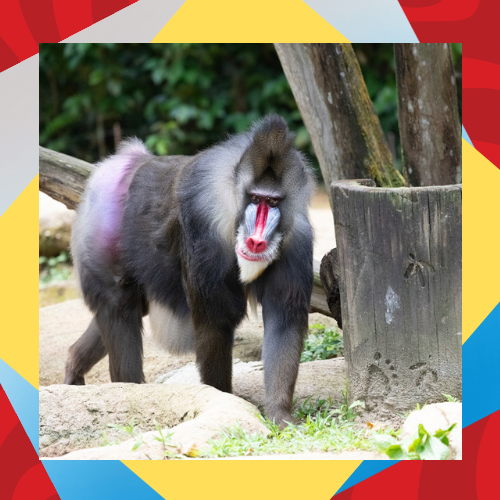


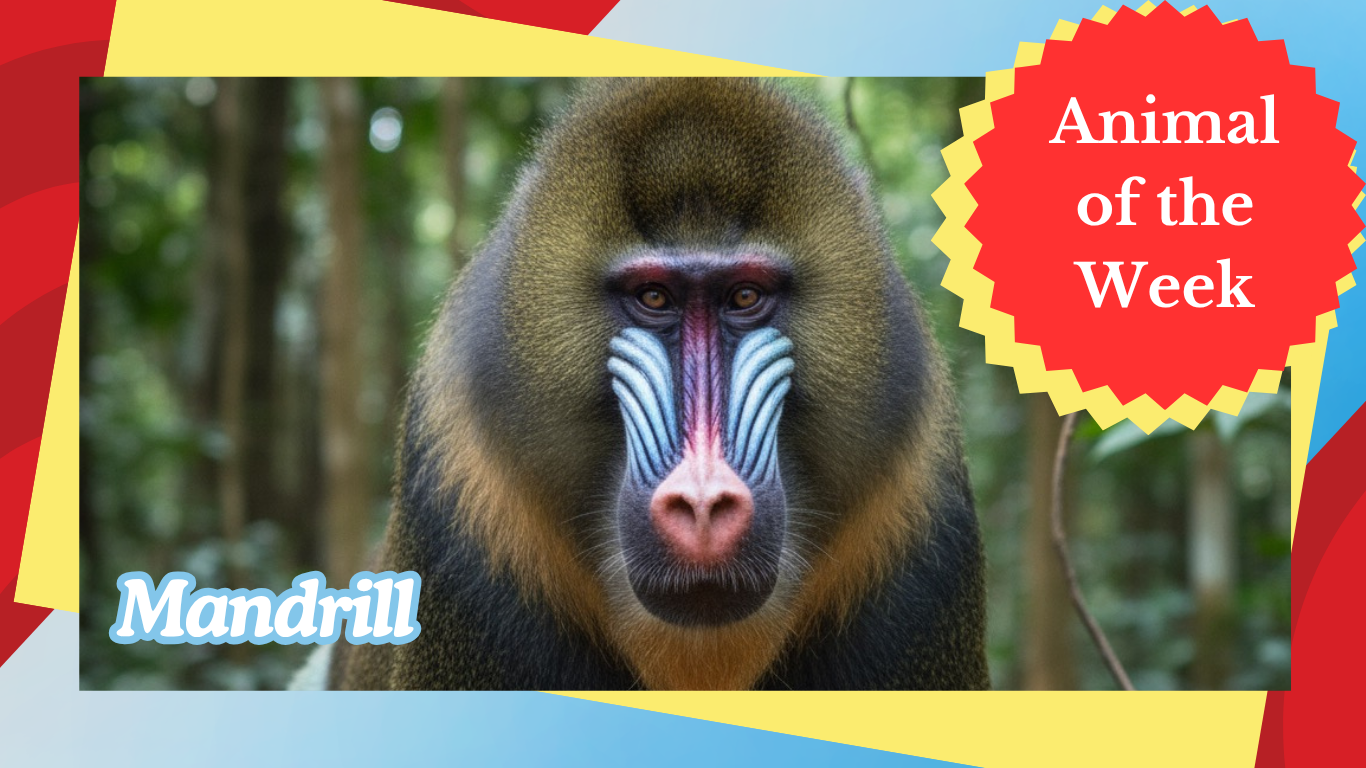


This gave me a whole new perspective. Thanks for opening my eyes.
I enjoyed your take on this subject. Keep writing!
I love the clarity in your writing.
This content is gold. Thank you so much!
You have a real gift for explaining things.
I’ve read similar posts, but yours stood out for its clarity.
What an engaging read! You kept me hooked from start to finish.
Your content always adds value to my day.
You’ve done a great job with this. I ended up learning something new without even realizing it—very smooth writing!
Excellent work! Looking forward to future posts.
Thank you for being so generous with your knowledge.
You’ve done a great job with this. I ended up learning something new without even realizing it—very smooth writing!
Your articles always leave me thinking.
What an engaging read! You kept me hooked from start to finish.
Your articles always leave me thinking.
Thank you for sharing this! I really enjoyed reading your perspective.
I enjoyed every paragraph. Thank you for this.
Your writing always inspires me to learn more.
I wasn’t expecting to learn so much from this post!
I love how well-organized and detailed this post is.
Very relevant and timely content. Appreciate you sharing this.
Very relevant and timely content. Appreciate you sharing this.
I always look forward to your posts. Keep it coming!
This was incredibly useful and well written.
Keep writing! Your content is always so helpful.
I appreciate the depth and clarity of this post.
You’ve done a great job with this. I ended up learning something new without even realizing it—very smooth writing!
This was really well done. I can tell a lot of thought went into making it clear and user-friendly. Keep up the good work!
I’ll be sharing this with a few friends.
This was really well done. I can tell a lot of thought went into making it clear and user-friendly. Keep up the good work!
This was a very informative post. I appreciate the time you took to write it.
Excellent work! Looking forward to future posts.
The way you write feels personal and authentic.
This content is gold. Thank you so much!
I love the clarity in your writing.